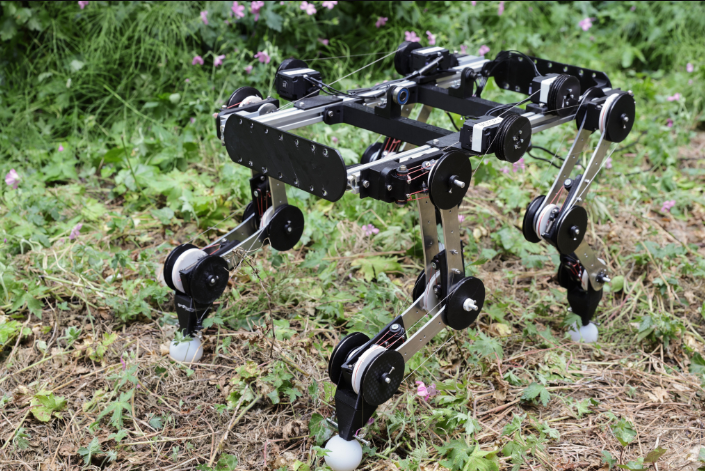A group of engineers at the Swiss Federal Institute of Technology in Lausanne (EPFL) has developed a four-legged robot dog.
The team at EPFL's Computational Robot Design & Fabrication Lab (CREATE), led by Prof. Josie Hughes, has been at the forefront of innovative robot design, tapping into generative AI tools to achieve unprecedented capabilities.
One of the researchers, Mickaël Achkar, utilized motion-capture data from live dogs to construct a bio-inspired robot dog with remarkable autonomous running abilities.

Robot Based on Real Dog Motion
Achkar's inspiration arose from animals' motor control processes, aiming to engineer a robot exhibiting animal-like characteristics while focusing on minimal joints that could execute diverse movements.
The team selected a dog as the model due to the availability of a comprehensive open-source dataset on canine motion. They then employed principal component analysis to distill the data into meaningful vectors, a pivotal step for establishing precise specifications for the robotic design.
The resulting robotic dog demonstrates bilateral symmetry, featuring four legs with three coordinated joints each. This design enables the robot to mimic real dogs' agility and movement patterns.
The prototype came together using metal rods as bones, 3D-printed pulleys as joints, thin cables as tendons, and a few screws to assemble the components.
The engineers tested the prototype on a treadmill and made a fascinating discovery: the robot could autonomously run without activating its control motors.
This autonomous motion prompted further refinement, including the addition of a counterweight resembling a pendulum, which injects energy through resonance to sustain the movement.
Bio-Inspired Robot Dog
Francesco Stella, a PhD student at CREATE and the project supervisor, highlighted the automatic responsiveness of the robot's body to stimuli, comparing it to a trout's instinctive swimming in water. Although the robot's control motors enhance its range of motion, they are not yet robust enough for more complex tasks.
Despite this limitation, Achkar and his team subjected the robot to various tests, observing its graceful response to challenges such as navigating obstacles or disruptions. Remarkably, the robot achieves a 6 km/h speed on the treadmill.
Achkar's research paper detailing this achievement is currently awaiting publication in a scientific journal. In essence, the work carried out by the team at EPFL exemplifies their commitment to bio-inspired robot designs.
While their objective is not to compete with ultra-high-tech robotic counterparts, their research offers insights into refining the fundamental robotic design, capitalizing on passive properties to simplify control systems, and maximizing the robot's capabilities.
"Our goal isn't to compete with ultra-high-tech robotic dogs, but rather to explore bio-inspired robot designs," Achkar said in a statement.
"This entails honing a robot's fundamental design and modifying its passive proprieties so that only simple control systems are needed - all while maximizing the robot's capabilities. What we've done here - engineering the joints to work in synergy - has already proven useful for creating robotic hands and other body parts," he added.
Related Article: Healthcare Companion Robots Powered by AI Could Help Alleviate Loneliness Among Older People










